Abstract
1. The chief sulphur-containing metabolite of styrene and sytrene oxide in the rabbit and rat is chromatographically identical with N-acetyl-S-(β-hydroxyphenethyl)-l-cysteine and this compound is also formed, together with N-acetyl-S-phenethyl-l-cysteine, as a metabolite of phenethyl bromide. 2. The amounts of the phenethylmercapturic acid and its hydroxy derivative excreted in the urine of animals dosed with phenethyl bromide, styrene, styrene oxide, phenyl glycol, S-phenylethylcysteine and phenethylmercapturic acid have been determined. 3. Liver slices convert phenethylcysteine and phenethylmercapturic acid into N-acetyl-S-(β-hydroxyphenethyl)-l-cysteine. 4. Methods for the determination by gas–liquid chromatography of mandelic acid and hippuric acid, which are metabolites of some of the compounds studied, are described.
Full text
PDF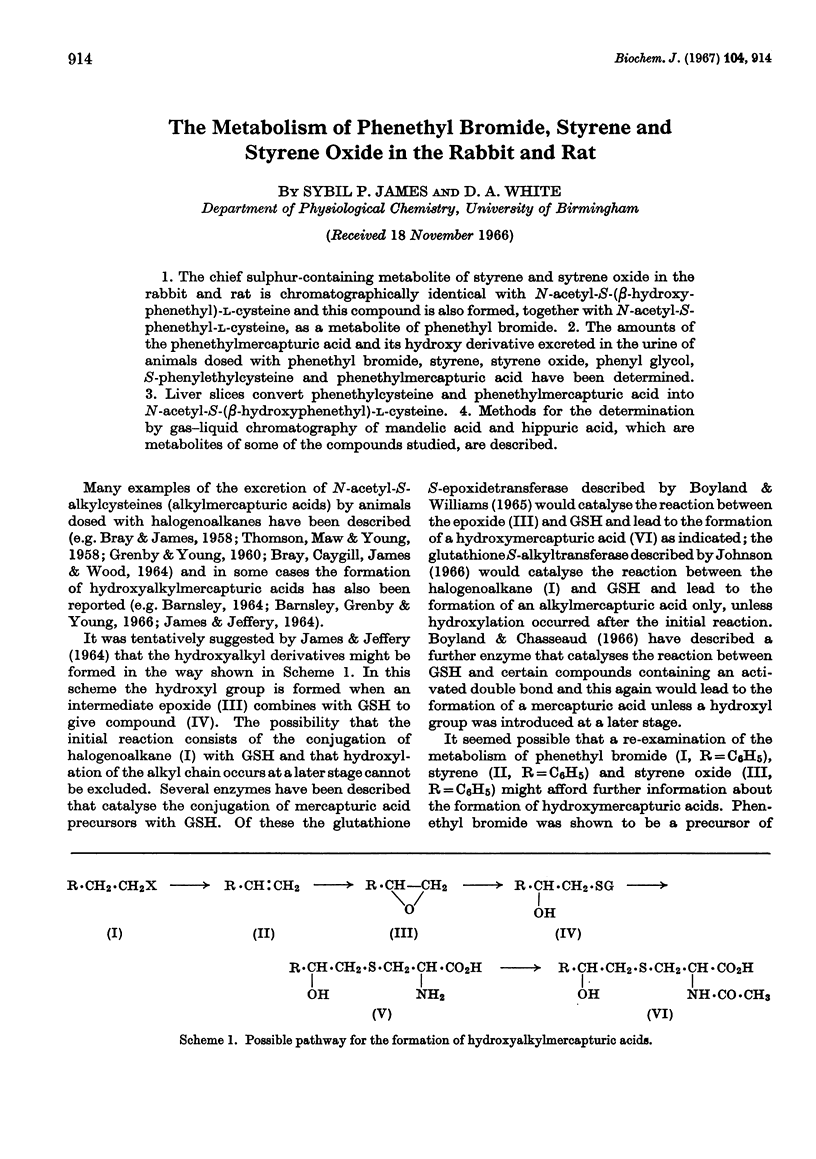
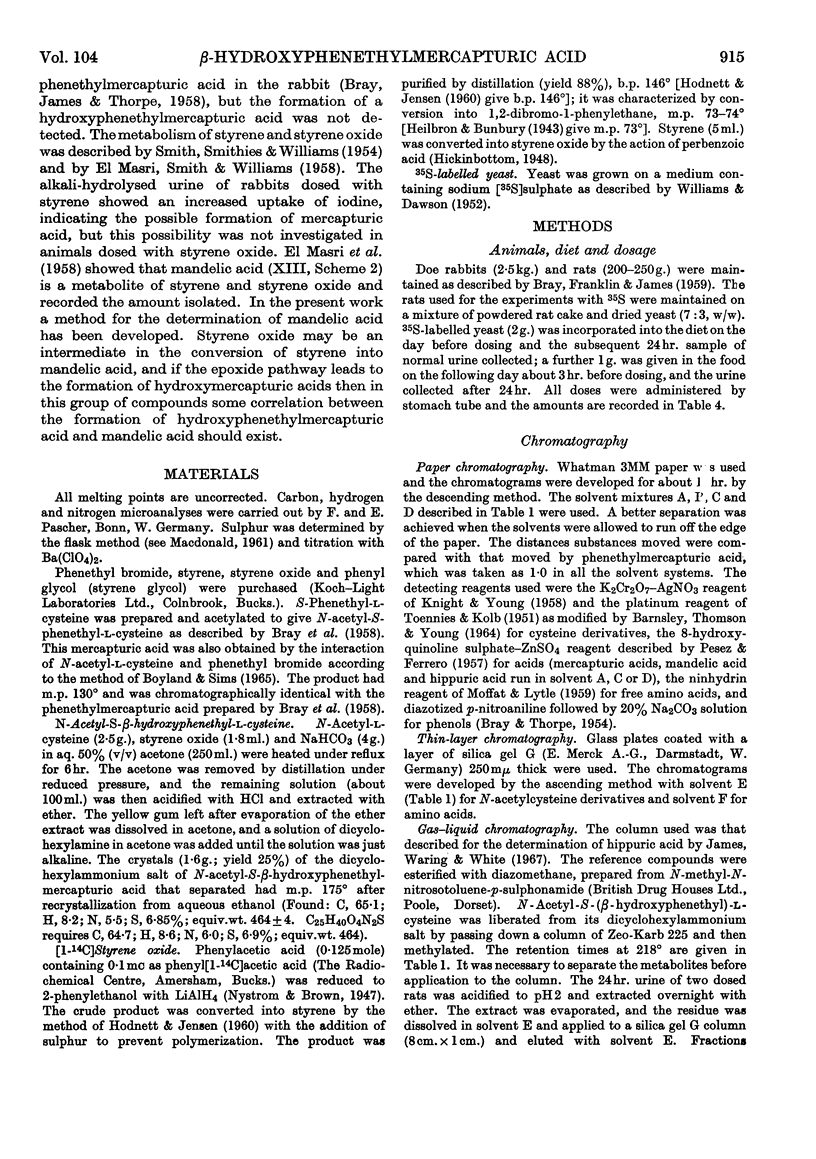
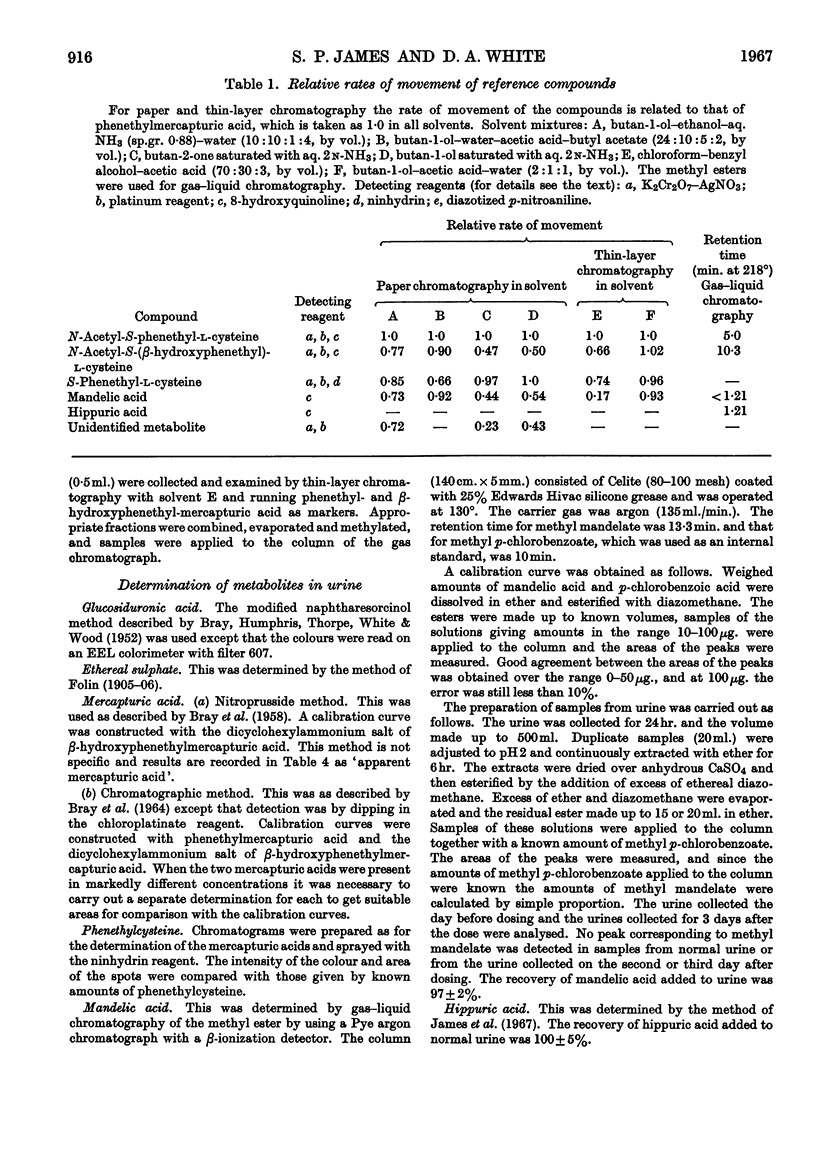
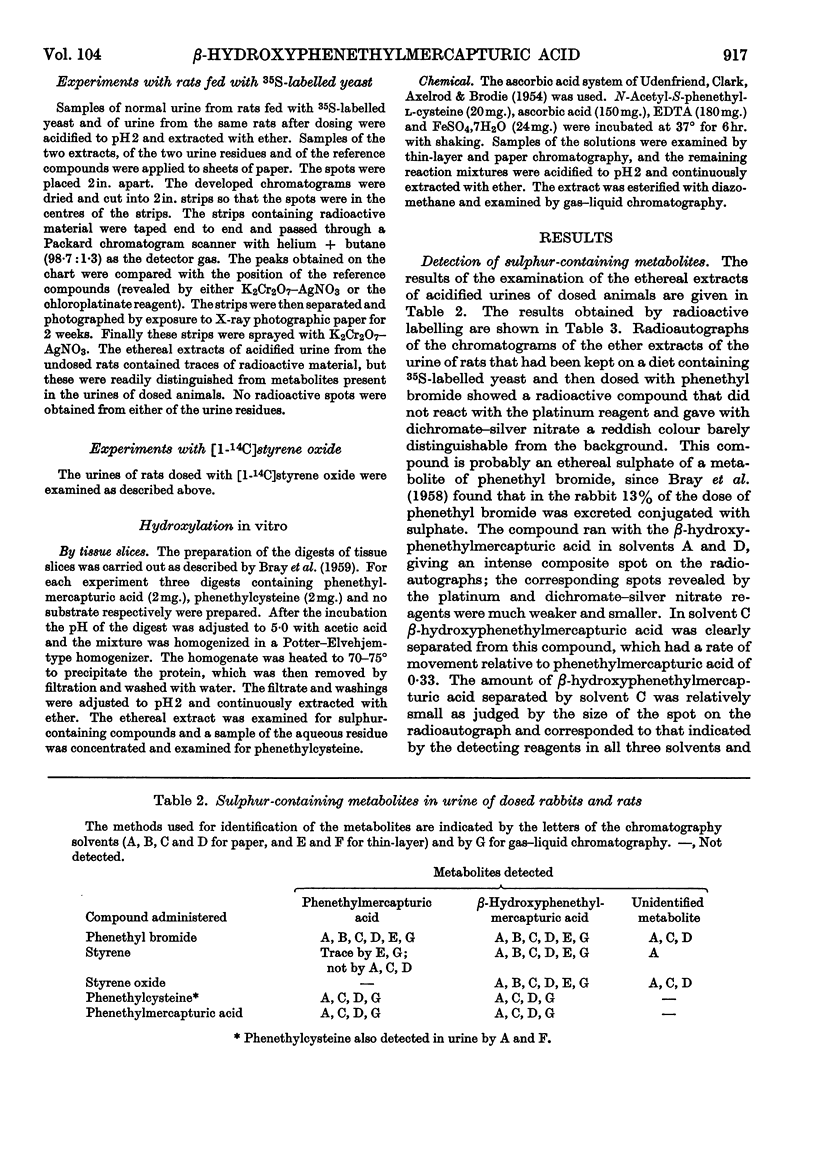
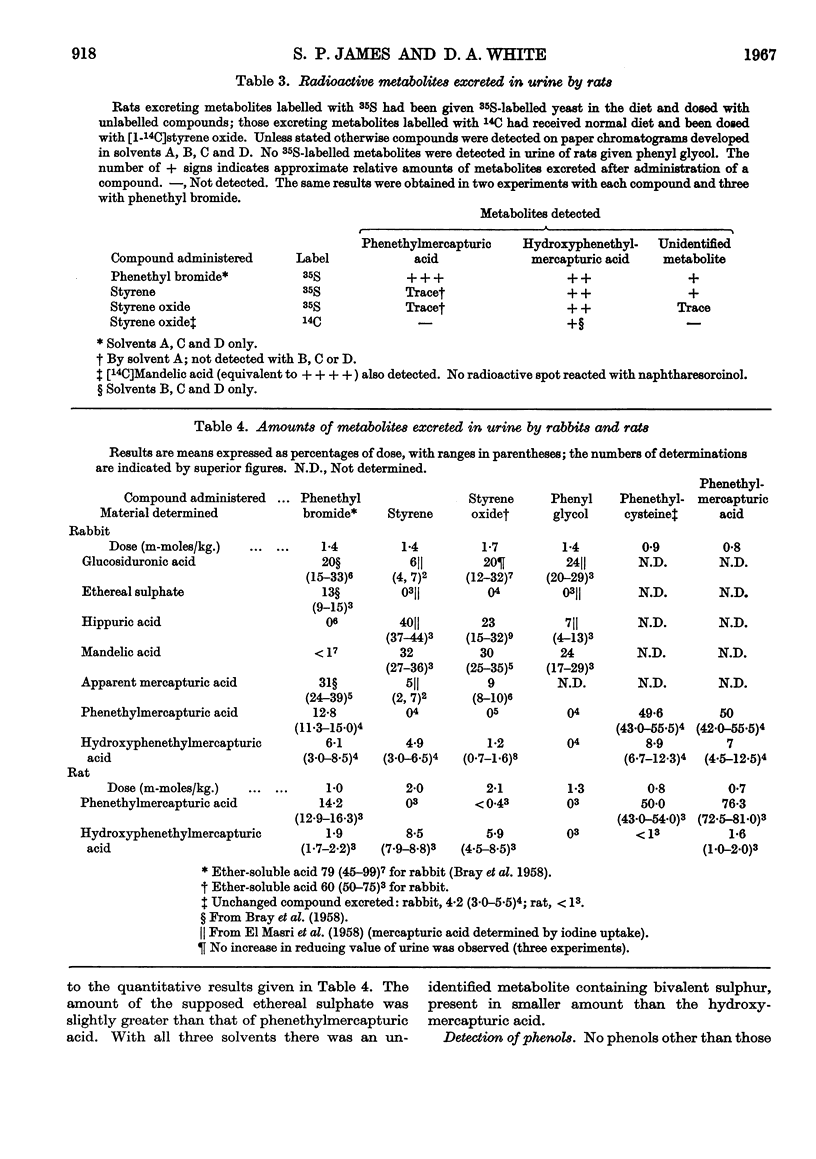

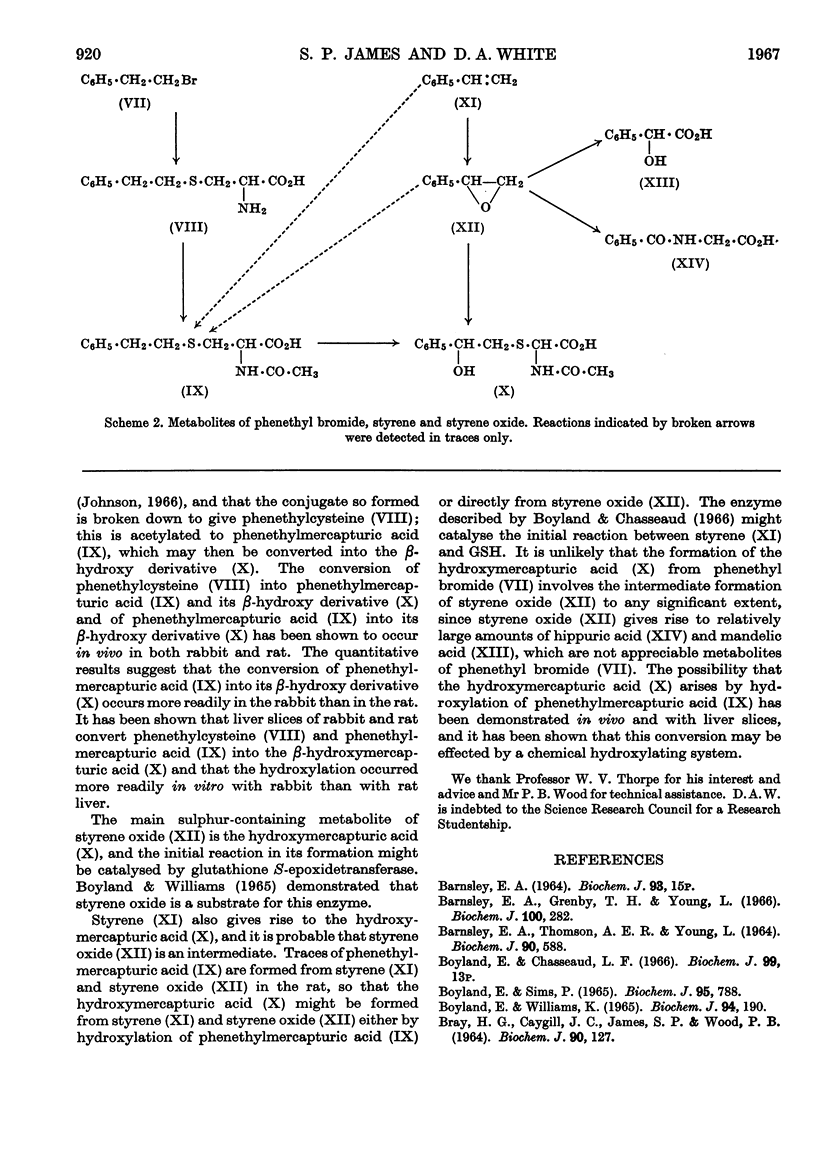
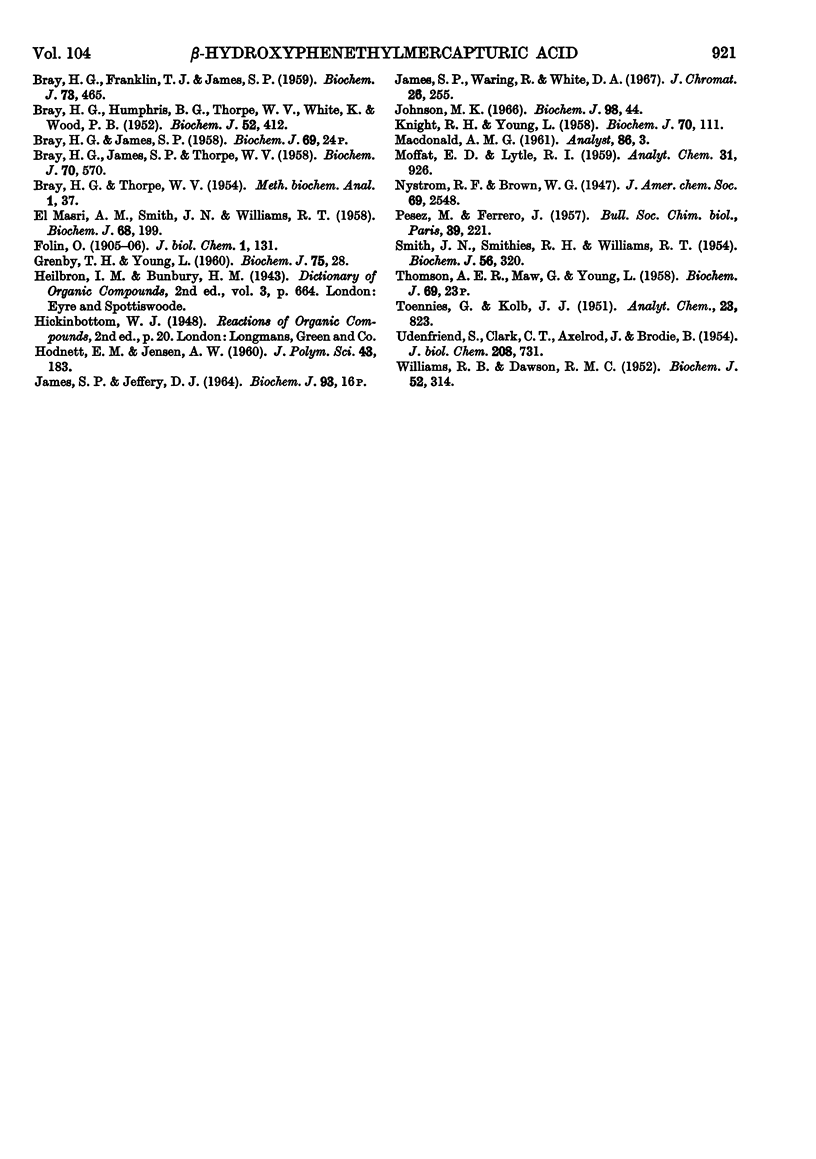
Selected References
These references are in PubMed. This may not be the complete list of references from this article.
- BOYLAND E., SIMS P. METABOLISM OF POLYCYCLIC COMPOUNDS. THE METABOLISM OF 9,10-EPOXY-9,10-DIHYDROPHENANTHRENE IN RATS. Biochem J. 1965 Jun;95:788–792. doi: 10.1042/bj0950788. [DOI] [PMC free article] [PubMed] [Google Scholar]
- BOYLAND E., WILLIAMS K. AN ENZYME CATALYSING THE CONJUGATION OF EPOXIDES WITH GLUTATHIONE. Biochem J. 1965 Jan;94:190–197. doi: 10.1042/bj0940190. [DOI] [PMC free article] [PubMed] [Google Scholar]
- BRAY H. G., FRANKLIN T. J., JAMES S. P. The formation of mercapturic acids. 3. N-Acetylation of S-substituted cysteines in the rabbit, rat and guinea pig. Biochem J. 1959 Nov;73:465–473. doi: 10.1042/bj0730465. [DOI] [PMC free article] [PubMed] [Google Scholar]
- BRAY H. G., HUMPHRIS B. G., THORPE W. V., WHITE K., WOOD P. B. Kinetic studies of the metabolism of foreign organic compounds. II. The formation of phenols from certain precursors. Biochem J. 1952 Nov;52(3):412–415. doi: 10.1042/bj0520412. [DOI] [PMC free article] [PubMed] [Google Scholar]
- BRAY H. G., JAMES S. P., THORPE W. V. Metabolism of some omega-halogenoalkylbenzenes and related alcohols in the rabbit. Biochem J. 1958 Dec;70(4):570–579. doi: 10.1042/bj0700570. [DOI] [PMC free article] [PubMed] [Google Scholar]
- Barnsley E. A., Grenby T. H., Young L. Biochemical studies of toxic agents. The metabolism of 1- and 2-bromopropane in rats. Biochem J. 1966 Jul;100(1):282–288. doi: 10.1042/bj1000282. [DOI] [PMC free article] [PubMed] [Google Scholar]
- Barnsley E. A., Thomson A. E., Young L. Biochemical studies of toxic agents. 15. The biosynthesis of ethylmercapturic acid sulphoxide. Biochem J. 1964 Mar;90(3):588–596. doi: 10.1042/bj0900588. [DOI] [PMC free article] [PubMed] [Google Scholar]
- Bray H. G., Caygill J. C., James S. P., Wood P. B. Formation of mercapturic acids. 5. Metabolism of some halogenoparaffins and nitroparaffins. Biochem J. 1964 Jan;90(1):127–132. doi: 10.1042/bj0900127. [DOI] [PMC free article] [PubMed] [Google Scholar]
- EL MASRI A. M., SMITH J. N., WILLIAMS R. T. Studies in detoxication. 73. The metabolism of alkylbenzenes: phenylacetylene and phenylethylene (styrene). Biochem J. 1958 Feb;68(2):199–204. doi: 10.1042/bj0680199. [DOI] [PMC free article] [PubMed] [Google Scholar]
- GRENBY T. H., YOUNG L. Biochemical studies on toxic agents. 12. The biosynthesis of n-propylmercapturic acid from n-propyl halides. Biochem J. 1960 Apr;75:28–33. doi: 10.1042/bj0750028. [DOI] [PMC free article] [PubMed] [Google Scholar]
- James S. P., Waring R. H., White D. A. Separation of mercapturic acids and related compounds by gas chromatography and a method for the determination of hippuric acid. J Chromatogr. 1967 Jan;26(1):255–258. doi: 10.1016/s0021-9673(01)98863-6. [DOI] [PubMed] [Google Scholar]
- Johnson M. K. Studies on glutathione S-alkyltransferase of the rat. Biochem J. 1966 Jan;98(1):44–56. doi: 10.1042/bj0980044. [DOI] [PMC free article] [PubMed] [Google Scholar]
- KNIGHT R. H., YOUNG L. Biochemical studies of toxic agents. 11. The occurrence of premercapturic acids. Biochem J. 1958 Sep;70(1):111–119. doi: 10.1042/bj0700111. [DOI] [PMC free article] [PubMed] [Google Scholar]
- PESEZ M., FERRERO J. Test de fluorescence dans la chromatographie sur papier des acides aliphatiques. Bull Soc Chim Biol (Paris) 1957 Feb 20;39(1):221–222. [PubMed] [Google Scholar]
- SMITH J. N., SMITHIES R. H., WILLIAMS R. T. Studies in detoxication. 56. The metabolism of alkylbenzenes: stereochemical aspects of the biological hydroxylation of ethylbenzene to methylphenylcarbinol. Biochem J. 1954 Feb;56(2):320–324. doi: 10.1042/bj0560320. [DOI] [PMC free article] [PubMed] [Google Scholar]
- UDENFRIEND S., CLARK C. T., AXELROD J., BRODIE B. B. Ascorbic acid in aromatic hydroxylation. I. A model system for aromatic hydroxylation. J Biol Chem. 1954 Jun;208(2):731–739. [PubMed] [Google Scholar]
- WILLIAMS R. B., DAWSON R. M. C. The biosynthesis of L-cystine and L-methionine labelled with radioactive sulphur (35S). Biochem J. 1952 Oct;52(2):314–317. doi: 10.1042/bj0520314. [DOI] [PMC free article] [PubMed] [Google Scholar]


